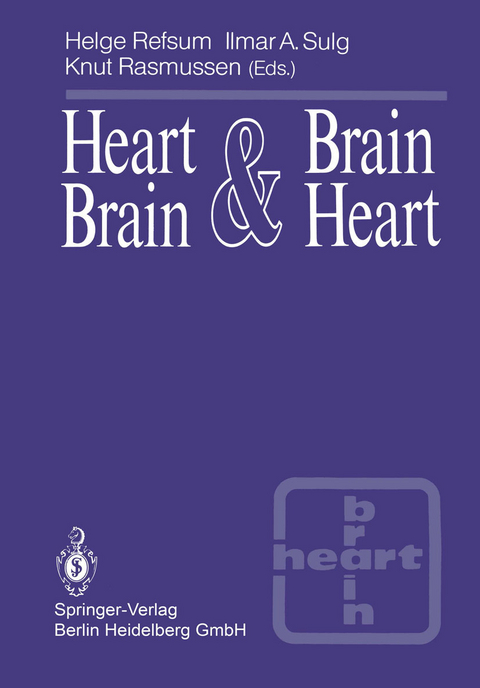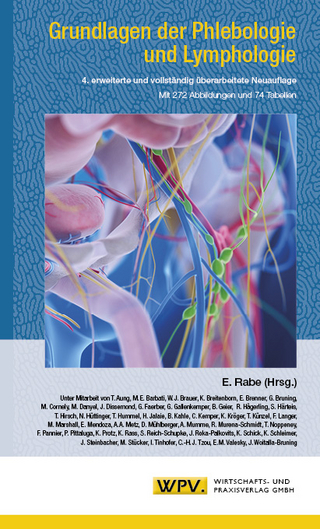
Heart & Brain, Brain & Heart
Springer Berlin (Verlag)
978-3-642-83458-5 (ISBN)
1. Spasm of Cerebral and Coronary Vessels: Effects of Calcium Antagonists.- 2. Opioid Peptides and the Cardiovascular System with Especial Reference to Low Perfusion States.- 3. Cardiac and Cerebral Effects of Local Anesthetics.- 4. Neurotoxins as Tools in Studying Cardiac Excitation-Contraction Coupling.- 5. Adenosine and ATP Interactions with Autonomic Neural Control of the Heart.- 6. Sympathetic Influences on Arrhythmogenesis in the Ischemic Heart.- 7. Sympathetic Nervous System and Malignant Arrhythmias: Evidence for Further Links.- 8. Modulation of Cardiac Arrhythmias by the Autonomic Nervous System.- 9. Supraventricular Tachycardia and the Autonomic Nervous System.- 10. Heart Rate Changes and ECG Rhythm Disturbances in the Cluster Headache Syndrome.- 11. Blood Pressure Assessment in a Broad Chronobiologic Perspective.- 12. Mechanisms of Syncope and of Sudden Death Due to Ventricular Tachyarrhythmias.- 13. Possible Role of the Fear Paralysis Reflex in Sudden Cardiac Death.- 14. Some Clinical Neurological Aspects of Syncope.- 15. Differential Diagnosis in Syncope and Epilepsy: Clinical Neurophysiological and Cardiological Aspects.- 16. Thromboembolic Complications in Atrial Fibrillation.- 17. Echocardiography and Embolic Sources in the Heart.- 18. 31P Nuclear Magnetic Resonance Spectroscopy of Cerebral and Cardiac Ischemia.- 19. Oxygen Radicals in Heart and Brain Tissue Injury.- 20. Prevention of Ischemic Brain Damage Following Cardiac Arrest.- 21. Influence of Sleep, Activity and Circadian Rhythm on Heart Rate, QT Interval and Cardiac Arrhythmias.- 22. Pulmonary Hemodynamics in Obstructive Sleep Apnea Syndromes.- 23. Sleep Apnea Syndrome as an Occupational Disease.- 24. Concomitant Manifestations of Disease in the Cardiovascular and Nervous System: An Overview.- 25. Cardiac Involvement in Kearns-Sayre Syndrome.- 26. Some Neurological and Hereditary Aspects of Progressive External Ophthalmoplegia and Mitochondrial Encephalomyopathy.- 27. Neurological and Cardiological Findings in Systemic Lupus Erythematosus.- 28. High Altitude Physiology and Pathophysiology: Medical Observations During the Norwegian Mount Everest Expedition.- 29. Heart and Brain Under Hyperbaric Conditions in Man.- 30. Effects of Positive End-Expiratory Pressure Ventilation on Intracranial Pressure and Cerebral Blood Flow.- 31. Positive End-Expiratory Pressure and Cardiac Function: The Role of Extraventricular Constraint.- 32. Neuromonitoring in High Risk Surgery: Physiological Tolerance Limits for Central Nervous System.- 33. Monitoring Brain Function During Cardiovascular Surgery: Hypoperfusion vs Microembolism as the Major Cause of Neurological Damage During Cardiopulmonary Bypass.- 34. ' Cerebral Blood Flow During Cardiopulmonary Bypass.- 35. Cerebral Hemodynamics During Nonpulsatile Cardiopulmonary Bypass.- 36. Cerebral Outcome After Open Heart Surgery: A Long-term Multidimensional Follow-up of Valvular Replacement Patients.- 37. Cerebral Protection During Open Heart Surgery: Clinical, Psychometric, Enzymological, and Radiological Data.
| Erscheint lt. Verlag | 13.7.2013 |
|---|---|
| Zusatzinfo | XVI, 470 p. 111 illus., 12 illus. in color. |
| Verlagsort | Berlin |
| Sprache | englisch |
| Gewicht | 840 g |
| Themenwelt | Medizinische Fachgebiete ► Chirurgie ► Herz- / Thorax- / Gefäßchirurgie |
| Medizinische Fachgebiete ► Innere Medizin ► Kardiologie / Angiologie | |
| Medizin / Pharmazie ► Medizinische Fachgebiete ► Neurologie | |
| Medizin / Pharmazie ► Medizinische Fachgebiete ► Pharmakologie / Pharmakotherapie | |
| Studium ► 1. Studienabschnitt (Vorklinik) ► Physiologie | |
| Schlagworte | adenosine • Bypass • cardiac function • Cardiovascular • Cells • heart rate • nervous system • Neurology • neurosurgery • Opioid • pathophysiology • Physiology • Surgery • tissue |
| ISBN-10 | 3-642-83458-2 / 3642834582 |
| ISBN-13 | 978-3-642-83458-5 / 9783642834585 |
| Zustand | Neuware |
| Haben Sie eine Frage zum Produkt? |
aus dem Bereich


